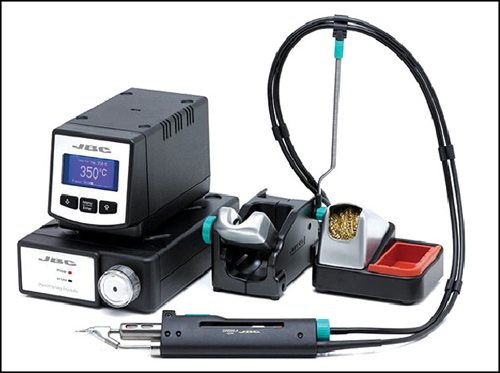
If you choose to buy a vacuum pump type de-soldering station, the next thing you need to decide on is the type of hand piece. There are different types of hand pieces available, such as gun type, pen type, straight, etc, and everyone will have a different opinion on which is the best. So go by your own gut feeling. Personally, I find the pen type more comfortable for precision work.
Once you have made all the above decisions, it’s time to work out the specifications for each model and choose one that best suits your requirements. Specifications for a de-soldering station are not too complicated but understanding them can make a big difference in making the right selection. Given below are the specifications and their descriptions to help you understand what they indicate about the de-soldering station.
Temperature control. The simplest and the cheapest de-soldering stations do not have any kind of thermal regulation. They are directly plugged into the wall socket and heat up to high temperatures in their holders. There is some amount of natural thermal regulation due to the physical environment. As the tip gets hotter, it dissipates more heat, and as it gets cooler, it dissipates less heat. Such stations may be described as thermally balanced but their output is neither controlled nor stable. Their high temperatures can cause permanent damage to the PCB.
Power consumption. When the nozzle tip touches the joint, its temperature drops, as the heat is dissipated in the joint. If the part you are soldering can dissipate heat at a higher rate than what your tip can deliver, the temperature will keep dropping until it won’t melt solder any more. The wattage that you would require completely depends on the project at hand. Usually, bigger components absorb and dissipate more heat. If this rate is more than the heating rate of the de-soldering equipment, the joint starts cooling down. So the general rule is that you need more wattage for larger parts.
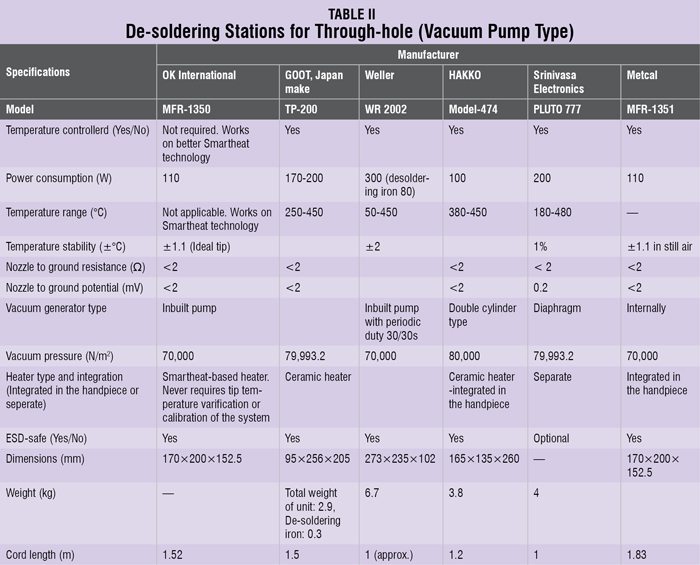
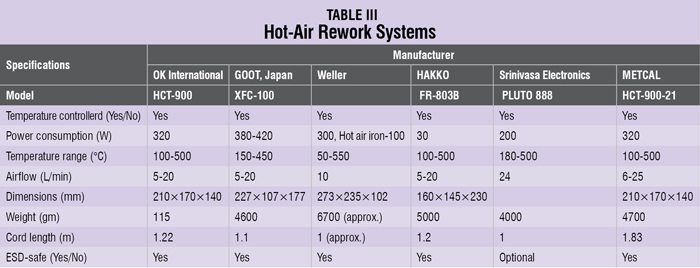
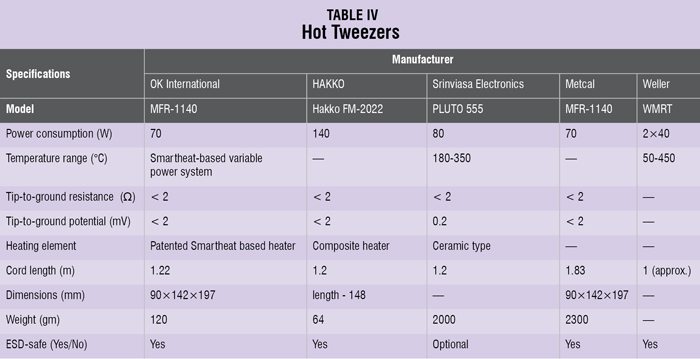
A higher wattage does not mean that the nozzle tip runs hotter. Instead, the heating is faster and there is more power in reserve, when required. Choose a de-soldering station with sufficient wattage to cover all types of joints. For large components and joints you would need more power, and you would not like to buy another station for that kind of work.
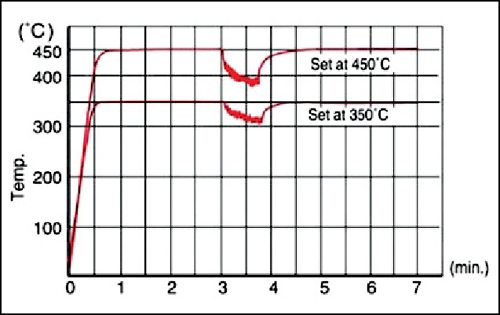
Temperature range. Different solder joints have different nozzle temperature requirements for de-soldering. Also, different solders have different melting temperatures (see Table I). So it makes sense for the de-soldering station to be temperature-controlled type. Check out the range of joints you would be de-soldering and select a station with suitable range. The wider the range, the better.
Temperature stability. This is a measure of how well the control circuit works, allowing for the heat losses into the environment and yet keeping the tip’s temperature stable. The stability specification is valid only when the iron is at rest, not when it is actually being used for soldering.
Nozzle-to-ground resistance. Tip-to-ground potential is also called millivolt leakage. This is the voltage existing between the soldering iron tip and the workstation common point ground. It should not exceed 2mV as defined by various standards.
Nozzle-to-ground potential. This is the resistance that exists between the tip of the soldering iron and the workstation common point ground. It should be between 2 ohms and 5 ohms.
Thermal recovery. This is also a measure of how well the control circuit works. When a joint is soldered, heat is lost from the tip through conduction and the tip’s temperature drops. Thermal recovery refers to how long the soldering station takes with a particular tip at, say, room temperature, to get back to the initial temperature. The better the thermal recovery, the faster the operator can work.
The characteristics in Fig. 4 were obtained by the manufacturer (HAKKO) by melting a solder consecutively on a 5×5mm PCB land size and simultaneously measuring the tip’s temperature with a thermocouple fitted on the tip.
ESD-safe. If you are interested in soldering a lot of static-sensitive parts such as CMOS chips or MOSFET transistors, you should look for slightly more advanced de-soldering stations that use static-dissipative material in their construction to ensure that static does not build up on the equipment itself. You may find these listed as ‘ESD safe.’ The cheap variants won’t necessarily be ESD-safe but, nevertheless, will still probably perform perfectly well in most hobby or educational applications, if you take the usual anti-static precautions when handling the components.






